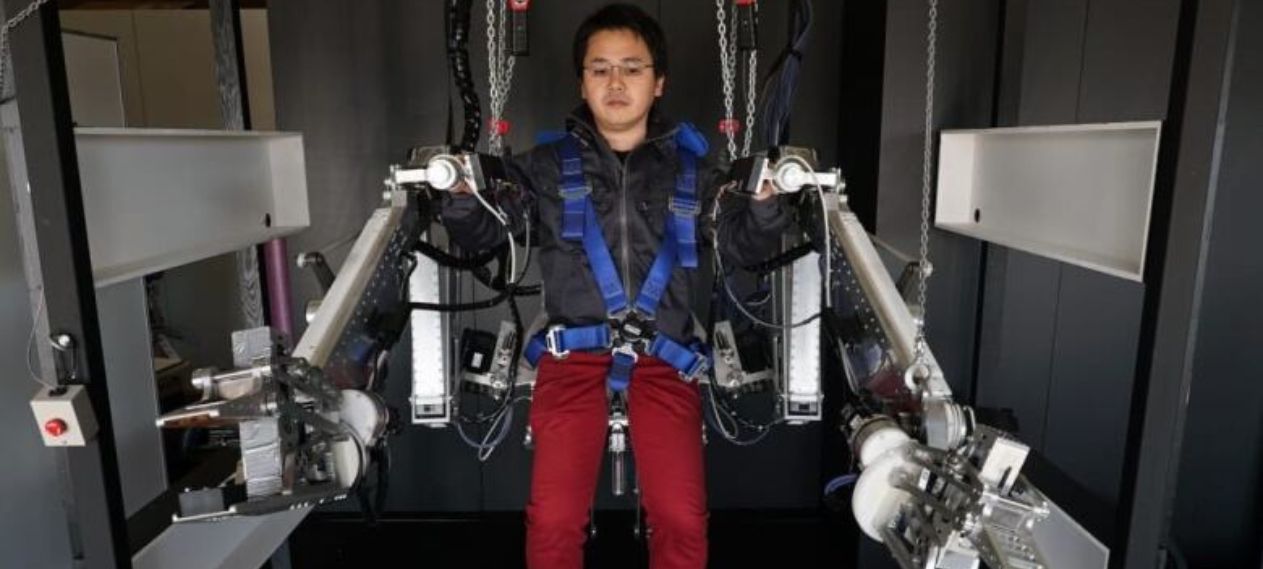Amidst the ruins, a survivor is located through the lens of a drone camera. To aid the survivor, a tracked robot delivers water, while rescue teams equipped with exoskeletons diligently clear a path for an autonomous stretcher, ready to transport the survivor to safety.
This captivating vision of the future unfolded at the Japan Mobility Show, where technology’s potential to assist and even supplant humans was on vivid display in a nation grappling with labor shortages and no stranger to natural disasters.
To allay any concerns, this simulated catastrophe was unleashed by none other than Godzilla, the iconic creature that has wreaked havoc in Japanese disaster films since the 1950s.
In Japan, nearly 30 percent of the population is aged 65 and older. “Due to the population decline, there are fewer individuals available for hazardous tasks,” observed Tomoyuki Izu, the founder of Attraclab, a local startup specializing in autonomous mobility.
Read Also: UAE Bans Meat Imports from Pakistan: Reasons Revealed
Izu, aged 61, explained, “My goal is to support individuals such as firefighters with my machines.”
Attraclab played a pivotal role in co-developing the diminutive delivery robot navigating the cardboard rubble at the Japan Mobility Show and crafting the remote-controlled stretcher equipped with wheels or tracks.
During the event, which opens to the public this weekend, Izu pointed out that the Japanese government currently favors “conventional equipment” for relief efforts. Nevertheless, he firmly believes there will be a growing market for advanced technology in the future.
“Japan is known for its abundance of humanoid robots in anime, and the people love them. However, autonomous vehicles like these still seem quite unfamiliar to them,” he added.
Since 2016, Japan’s Kawasaki Heavy Industries (KHI) has been diligently developing Kaleido, a robust humanoid robot capable of delicately lifting and relocating injured individuals.
Itsuki Goda from KHI’s robotics division stated, “In the future, this robot will have the capability to save lives or venture into perilous areas, such as fires.”
However, he acknowledged that the robot requires further development in its scanning capabilities to navigate challenging terrains. “If we want to employ it in real-world scenarios where conditions are constantly changing, we need several more years of development,” he told AFP.
Goda reassured that Kaleido’s current load capacity of 60 kilograms (132 pounds) will soon be increased with a new prototype, addressing one of its limitations.
The cost of such technology remains a concern. Presently, this robot is “perhaps ten times more expensive than a human, but if we manufacture 10,000 of them annually, the price will rapidly decrease,” Goda added.
Since the Fukushima nuclear disaster in 2011, a niche segment has witnessed significant growth: robots designed to clean up disaster-stricken areas that are challenging or perilous for human access.
Engineering firm Sugino Machine showcased a compact yet powerful robotic arm mounted on crawlers, engineered to operate in regions where emergency personnel cannot safely tread.
This robotic arm was initially constructed in 2018 for a nationally run atomic research agency, as part of Japan’s ongoing efforts to decommission the Fukushima Daiichi nuclear plant.
Akira Inujima from Sugino Machine explained, “It can be employed for initial damage assessment, debris removal, or lifting heavy objects beyond human capability.”
Read Also: Research Shows Tobacco Harm Reduction Could Save 1.2 Million Lives in Pakistan
The arm can be outfitted with various tools, including sensors for imaging, temperature, or radioactivity, as well as a high-pressure water lance.
“We are facing a labor shortage. While we cannot entirely replace humans with robots, we can offer solutions to assist their work,” Inujima noted.
“After Fukushima, we have continued our technological development due to a series of projects, heavily supported by the government, such as debris removal, which requires our technology,” Inujima concluded.

